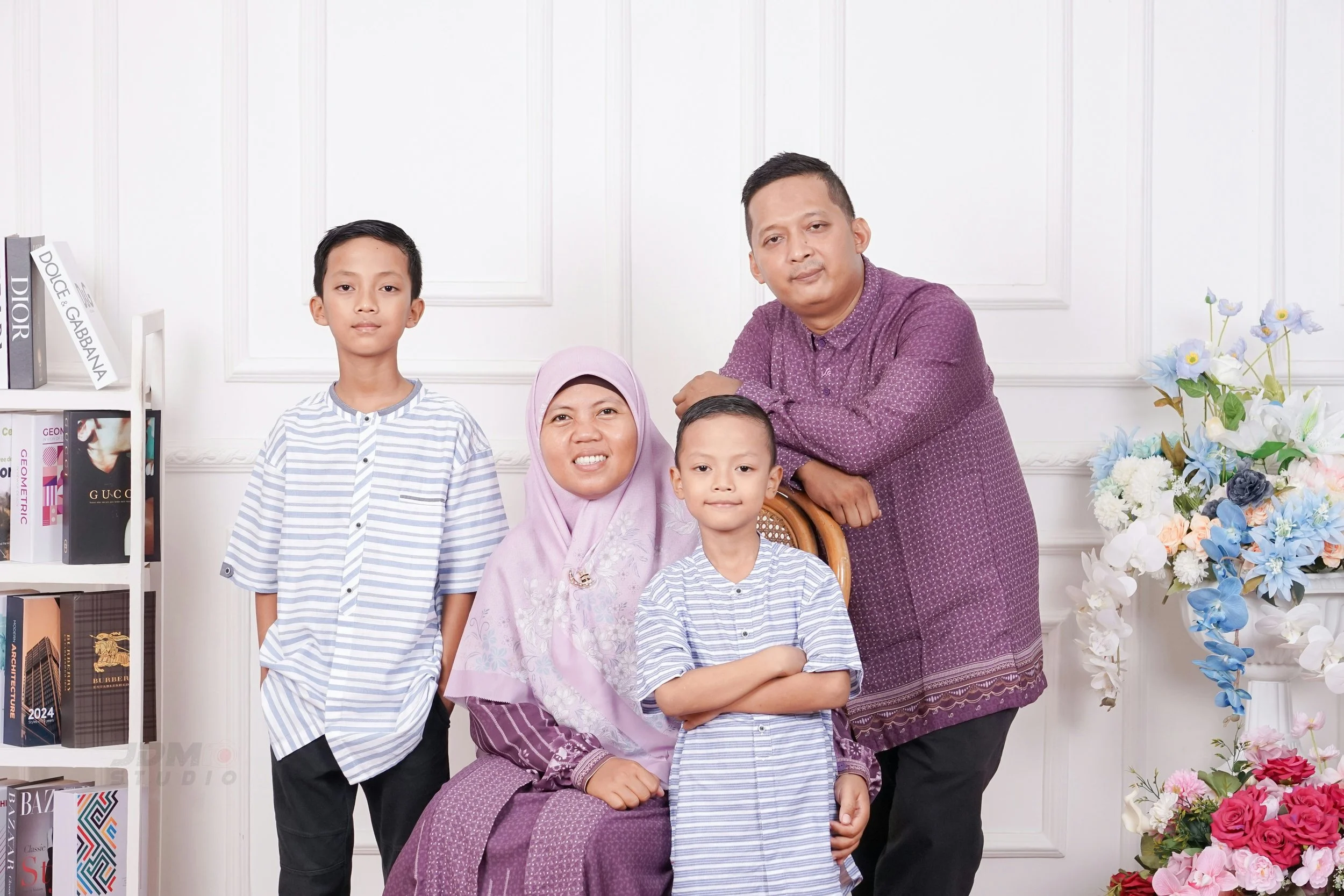Post 1: Emotionally Focused Family Therapy: Healing Relationships Through Connection
Families thrive on connection, but stress and misunderstanding can create painful distance. Emotionally Focused Family Therapy (EFFT) helps parents and children repair emotional bonds, improve communication, and rebuild trust by focusing on feelings beneath the conflict—not just behaviour on the surface.
Introduction
Every family experiences tension—misunderstandings, distance, or recurring arguments that seem impossible to solve. Yet beneath most conflict lies something simple and deeply human: a longing to feel seen, safe, and connected.
Emotionally Focused Family Therapy (EFFT) helps families reconnect by focusing not on who’s “right,” but on what’s happening underneath—hurt, fear, love, and the need for belonging.
At Cairns Wellbeing & Training, we use EFFT to help parents and children move from blame and withdrawal toward genuine understanding and closeness.
What Is Emotionally Focused Family Therapy?
EFFT grew out of Emotionally Focused Therapy (EFT), originally developed by Dr Sue Johnson and Dr Les Greenberg for couples. EFFT adapts those same principles for families, emphasising that strong emotional bonds are the foundation of wellbeing.
It’s based on attachment theory—the idea that our need for connection doesn’t end in childhood. When those bonds feel threatened, we react with anger, criticism, or withdrawal, not because we stop caring but because we’re trying to protect ourselves.
The Core Goals of EFFT
Increase awareness of emotion – Help each family member identify what they truly feel beneath surface reactions.
Create safety for expression – Build an atmosphere where vulnerability is met with curiosity, not judgment.
Re-organise emotional responses – Replace reactive patterns with new ways of reaching for one another.
Strengthen attachment bonds – Foster connection that endures beyond therapy sessions.
Common Challenges EFFT Addresses
Constant arguments or “walking on eggshells.”
Distance between parents and teens.
Coping with trauma, separation, or blended-family transitions.
Emotional disconnection after a crisis.
Behavioural issues rooted in anxiety or unmet emotional needs.
How EFFT Works in Practice
1. Mapping the Cycle
Instead of focusing on who’s wrong, we explore the repeating interaction pattern that keeps everyone stuck.
Example: Parent worries → child withdraws → parent pursues harder → conflict escalates.
2. Slowing Down Reactions
Sessions emphasise slowing emotional responses so family members can notice and name what’s happening in real time.
3. Accessing Primary Emotions
Under anger there’s often fear (“I’m scared I’m losing you”) or sadness (“I feel invisible”). Recognising this changes the tone of communication entirely.
4. Creating New Interactions
Families practice reaching and responding differently—turning protest into request, silence into openness, criticism into care.
5. Consolidation
New patterns are reinforced through reflection, practice at home, and celebrating moments of connection.
The Therapist’s Role
As an EFFT-trained counsellor, my role is to:
Help each person feel emotionally safe.
Track and gently interrupt negative cycles.
Model curiosity, empathy, and responsiveness.
Guide families toward repairing ruptures and expressing needs clearly.
What Makes EFFT Unique
Emotion, not logic, leads change. Families often try to fix problems with reason; EFFT focuses on feeling and connection.
It’s experiential. Insight alone doesn’t heal bonds—new emotional experiences do.
It’s collaborative. The therapist works with, not on, the family.
It fits all family structures. Single parents, blended families, grandparents raising kids—EFFT adapts to each.
Research and Effectiveness
Studies show EFFT improves:
Family communication
Parental sensitivity and confidence
Adolescent emotional regulation
Overall family satisfaction and resilience
It’s recognised internationally as an evidence-based, attachment-oriented model for family repair.
What to Expect in a Session
A typical session lasts around 50–60 minutes and may include the whole family or selected members depending on focus.
Early sessions: Exploring patterns and emotions.
Middle phase: Practicing new ways of responding.
Later sessions: Strengthening and maintaining change.
Between sessions, families often complete short reflection or communication tasks to reinforce connection at home.
Example Scenario
Maria and her 15-year-old daughter, Lily, argue daily. Lily says her mother never listens; Maria feels rejected and worried. In EFFT, they learn to recognise the cycle: Maria’s anxiety sounds like control, which triggers Lily’s withdrawal, which makes Maria push harder. Through sessions, they learn to name their fears and reach for each other instead of retreating. Their arguments decrease, and their bond strengthens.
Client Reflection Exercise
After reading this, reflect on:
When conflict happens in our family, what emotions lie beneath the surface?
How do we each show that we need connection, even if it comes out as anger or avoidance?
What might we do differently if we paused and shared those emotions instead?
Why Families Benefit from EFFT
It reduces blame and defensiveness.
It deepens empathy and emotional literacy.
It gives practical, repeatable tools for repairing disconnection.
It strengthens resilience—families leave therapy better equipped for future challenges.
When to Seek EFFT
Communication has broken down.
Arguments escalate quickly or go unresolved.
One or more members feel unseen, unheard, or unsafe emotionally.
You want to rebuild trust after change, loss, or trauma.
Conclusion
At its core, Emotionally Focused Family Therapy is about turning emotional pain into connection. When families learn to recognise what’s really happening beneath conflict, they rediscover warmth, safety, and love.
If your family feels stuck in patterns of distance or reactivity, EFFT offers a way forward—one conversation at a time.
Post 2: Breaking Negative Cycles in Families
When families argue, it’s easy to focus on blame rather than emotion. EFFT helps families see the pattern beneath the fight—pursuing, withdrawing, misunderstanding—and teaches new ways of reaching for each other with empathy and care.
Introduction
When family conflict feels repetitive—arguments that go nowhere, withdrawal, silence, or emotional outbursts—it’s easy to think “we’ve tried everything.” But most families aren’t broken; they’re caught in a cycle.
In this second post of the Emotionally Focused Family Therapy Series, we’ll look at how EFFT helps identify and change those negative patterns, allowing families to move from reactivity to connection.
What Are Family Interaction Cycles?
Every family develops a rhythm of interaction—a predictable loop of action and reaction. These cycles form unconsciously, often as an attempt to stay safe or be heard.
For example:
A child withdraws → a parent worries → the parent pushes for answers → the child withdraws further.
A teenager raises their voice → a parent feels disrespected → the parent reacts harshly → the teen shuts down.
No one is the “problem.” The cycle is the problem.
The Attachment Perspective
At the heart of EFFT is attachment theory—the understanding that every human needs secure emotional bonds. When those bonds feel threatened, fear and defensiveness take over.
A parent’s criticism might really be fear of losing connection.
A child’s defiance might really be sadness or hurt.
By recognising these attachment needs beneath the surface, families can shift from blame to understanding.
Recognising Common Family Cycles
1. The Pursue–Withdraw Cycle
One person seeks closeness through criticism or intensity; another retreats to stay safe. Both feel misunderstood.
2. The Attack–Defend Cycle
Arguments escalate quickly. Each person tries to be heard, but nobody feels safe enough to listen.
3. The Protect–Rescue Cycle
A parent overfunctions to protect, while a child underfunctions or resists, leading to frustration on both sides.
Identifying which cycle your family falls into is the first step to change.
How EFFT Breaks the Cycle
Slowing the Pattern
In sessions, we slow down interactions and examine what’s really happening between each person.Naming the Emotions Beneath
We explore what drives the reactions—fear, shame, worry, or loneliness.Creating Empathic Moments
Family members begin to see that everyone’s behaviour makes sense when emotions are understood.Practicing New Responses
Instead of reacting from fear, family members learn to respond with openness and curiosity.
A Realistic Example
Tom feels his teenage son ignores him. When Tom pushes for conversation, his son withdraws, which Tom interprets as rejection. In EFFT, they realise Tom’s pushing comes from worry, and his son’s silence comes from fear of disappointing his dad. Once both understand the emotional logic, communication softens and the relationship heals.
The Therapist’s Role
As an EFFT practitioner, I act as a guide—slowing down the conversation, helping each person find words for what they feel, and keeping emotional safety in the room.
Families often say this is the first time they’ve really heard each other.
Client Reflection Exercise
What happens in your family when tension rises?
Who tends to pursue, and who tends to withdraw?
What emotions might lie underneath those reactions?
How might you reach differently next time?
Conclusion
Breaking family cycles isn’t about assigning blame—it’s about understanding the deeper emotional needs that drive each reaction. EFFT helps families pause, reflect, and replace old patterns with moments of empathy and connection.
Next in our series, we’ll explore how families reconnect through emotion and build the safety needed to express vulnerability and love.
Post 3: Reconnecting Through Emotion
EFFT teaches families that emotions are not the problem—they’re the pathway to connection. Learn how sharing feelings safely and responding with empathy can help rebuild trust and closeness within your family.
Introduction
When families drift apart, it’s rarely because they stop caring—it’s because they stop feeling safe to show emotion.
Underneath anger, silence, or distance are often powerful feelings of hurt, fear, or longing.
In this third post of the Emotionally Focused Family Therapy (EFFT) Series, we explore how families begin to reconnect—not by fixing behaviour, but by understanding and responding to emotion.
Why Emotion Matters
In many families, emotions get a bad reputation. Parents might have been raised to “be strong” or “not make a fuss.” Children learn to hide what they feel to avoid conflict or disappointment.
But EFFT shows that emotions are not the problem—they’re the key to connection.
When families can name and share emotions safely, they move from defensiveness to understanding.
The Turning Point in Family Therapy
Most families enter therapy hoping to communicate better, but the real transformation happens when communication shifts from logic to emotion.
Instead of:
“You never listen to me.”
We explore:
“When I feel unheard, I start to believe my feelings don’t matter.”
This emotional language creates openings for empathy—moments where family members truly see one another again.
Creating Emotional Safety
Emotional safety doesn’t mean everyone is always calm or polite. It means each person feels:
Heard: “My feelings matter.”
Accepted: “I can be myself without being judged.”
Safe: “I can share even the hard things.”
In EFFT sessions, the therapist helps families build this safety by slowing conversations down, validating feelings, and modelling empathy.
Accessing Primary Emotions
EFFT distinguishes between secondary emotions (the outward reaction) and primary emotions (the deeper feeling underneath).
Secondary EmotionWhat’s Underneath (Primary Emotion)AngerFear, hurt, or sadnessWithdrawalShame or hopelessnessCriticismLoneliness or worry
When families learn to express the primary emotion, they connect instead of clash.
Example in Practice
Jade yells at her teenage son for not helping around the house. In therapy, she realises her anger comes from fear—fear that she’s losing influence, fear that he no longer needs her. When she expresses this vulnerability, her son responds with empathy instead of defensiveness. The cycle softens, and warmth returns.
How Families Practice Emotional Connection
Slowing the Moment
We pause during tense conversations to explore what’s really being felt.Naming the Emotion
Each person learns to identify the emotion underneath their reaction.Owning the Feeling
“I feel…” statements replace “You always…” accusations.Responding with Empathy
Family members learn to validate each other’s feelings before problem-solving.Reaching & Responding
They begin to turn toward each other rather than away.
Common Barriers to Reconnection
Fear of rejection: “If I open up, will they care?”
Old habits: Families easily fall back into quick fixes or avoidance.
Mistrust: Past hurts make vulnerability risky.
Timing: It takes repetition and patience to rebuild trust.
The therapist’s role is to keep the space safe while guiding the family through discomfort. Real change takes courage—but every honest moment brings new hope.
The Power of Empathy
Empathy is the emotional bridge that makes connection possible.
When a parent says, “I didn’t realise you felt that way,” or a child says, “I get that you’re just worried,” those moments transform relationships.
Empathy doesn’t mean agreement—it means understanding another person’s emotional world.
Client Reflection Exercise
Think about a recent family conflict.
What were you feeling underneath your reaction?
What might your loved one have been feeling underneath theirs?
What would it sound like if you shared those emotions instead of arguments?
Example Dialogue
Before:
“You’re always on your phone and ignoring us.”
After:
“When you’re on your phone during dinner, I feel left out and unimportant. I miss spending time with you.”
Shifting from criticism to emotion invites empathy instead of defence.
The Role of Repair
Reconnection isn’t about perfection—it’s about repair.
Every family experiences moments of disconnection. What matters most is how you come back together after them.
EFFT helps families develop a habit of repair: apologising, acknowledging hurt, and reaffirming love.
Conclusion
Reconnection happens when emotion becomes the bridge, not the barrier.
Through EFFT, families learn that expressing vulnerability doesn’t create weakness—it creates closeness.
When parents and children can name their fears, hurts, and hopes, they rediscover safety in one another—and that’s where healing truly begins.
Next in the series, we’ll look at how families strengthen bonds for the future and keep their emotional connection thriving beyond therapy.
Post 4: Strengthening Bonds for the Future
Lasting family change comes from small, consistent acts of connection. Learn how EFFT helps families maintain trust, communication, and resilience long after therapy—turning emotional safety into a lifelong habit.
Introduction
Family connection doesn’t end when therapy does—it grows through everyday moments of care, communication, and repair.
In this final post of the Emotionally Focused Family Therapy (EFFT) Series, we’ll explore how families can keep their emotional bonds strong over time. Whether you’ve completed therapy or are still in the process, these strategies help ensure that the progress you’ve made becomes a foundation for lifelong connection.
The Journey So Far
Through the earlier posts in this series, you’ve learned how EFFT helps families:
Recognise negative interaction cycles.
Express emotions safely.
Rebuild empathy and trust.
Now, the focus shifts to maintaining and deepening those changes—so emotional safety becomes the new normal at home.
Why Maintenance Matters
Change doesn’t happen once; it’s practiced. Families who maintain emotional connection:
Navigate stress more effectively.
Repair misunderstandings quickly.
Model healthy emotional habits for children.
Like tending a garden, relationships need consistent care. The good news is that EFFT provides practical tools that keep connection alive long after therapy ends.
The Core Pillars of Ongoing Connection
1. Emotional Awareness
Stay tuned into what’s happening beneath the surface. When tension rises, pause and ask:
“What am I feeling right now?”
“What might they be feeling?”
Awareness prevents reactivity and opens the door to empathy.
2. Vulnerability as Strength
Families often equate vulnerability with weakness, but it’s actually the glue of secure attachment. Being able to say, “I’m hurt,” or “I need you,” strengthens rather than weakens the relationship.
In EFFT, vulnerability is reframed as courage—an act of trust that invites closeness.
3. The Practice of Repair
Conflict is inevitable. Repair is essential.
Quick, genuine repair prevents resentment from taking root.
A simple repair might sound like:
“I’m sorry I snapped earlier. I was stressed, but you didn’t deserve that.”
When families normalise repair, mistakes become opportunities for connection, not disconnection.
4. Responding, Not Reacting
Reactions happen fast—raised voices, silence, withdrawal. Responding takes a pause:
Notice the trigger.
Breathe.
Choose a response aligned with care, not fear.
That small moment of mindfulness changes everything.
5. Creating Shared Meaning
Connection deepens when families share experiences—meals, traditions, humour, rituals of appreciation.
Small gestures (like checking in each day or expressing gratitude) build emotional currency for harder times.
Example: A Family Who Stayed Connected
After completing EFFT, the Nguyen family continued using “repair talks” at home. When arguments arose, they paused, acknowledged emotions, and revisited conversations later. Over time, their house felt calmer. The children started using the same language with each other—proof that emotional connection can become a family culture.
When Old Patterns Resurface
Even after significant progress, families sometimes slip back into old habits. This doesn’t mean therapy “didn’t work.” It means stress is high or emotional needs aren’t being met.
When this happens:
Recognise the cycle early. (“We’re slipping back into pursuit–withdraw.”)
Name the emotion. (“I’m feeling anxious, not angry.”)
Return to repair. (“Let’s try again.”)
Reconnecting quickly prevents small lapses from becoming larger rifts.
How to Reinforce Connection Daily
PracticeDescriptionEmotional Check-InsShort, regular conversations about feelings instead of logistics.Appreciation MomentsVerbalise gratitude: “I liked when you…”Pause & ReflectWhen tension arises, take a breath before responding.Family RitualsShared meals, walks, or evening check-ins that build consistency.
Consistency, not perfection, keeps families close.
How Parents Can Model Connection
Children learn emotional habits by observing adults. When parents show empathy, self-awareness, and repair, children internalise those behaviours.
Parents can model by:
Naming emotions: “I’m feeling frustrated, but I can calm down.”
Taking responsibility: “I overreacted earlier, and I’m sorry.”
Demonstrating curiosity: “You seem quiet—are you okay?”
These small acts shape how children handle relationships for life.
Integrating EFFT Principles After Therapy
To maintain progress:
Review what worked in therapy—what moments helped you feel closest?
Identify triggers that tend to restart the old cycle.
Commit to shared goals—what kind of family do we want to be?
Schedule regular “connection talks.”
Some families even choose booster sessions every few months to refresh their skills.
Client Reflection Exercise
Take 10 minutes to reflect together:
How has our family changed since beginning therapy?
What helps us reconnect after conflict?
What rituals make us feel close?
What do we want to keep practicing?
Write your answers down and revisit them as a family mission statement.
The Therapist’s Perspective
As an EFFT practitioner, it’s deeply moving to watch families reclaim warmth and closeness. The most successful outcomes come not from doing therapy perfectly, but from continuing the work outside the room—with honesty, compassion, and persistence.
Encouragement for Families
You don’t need to be perfect to stay connected—you just need to keep showing up.
Every conversation, apology, and moment of laughter strengthens your family bond.
EFFT reminds us that emotional connection isn’t a one-time event—it’s a living process of care, courage, and love.
Conclusion
The real success of therapy is measured not by the absence of conflict, but by how quickly a family can find each other again after it.
By continuing to practice emotional awareness, vulnerability, and repair, your family can stay resilient and connected for years to come.
If you’d like support maintaining your family’s emotional connection or navigating a new challenge, we’re here to help.




